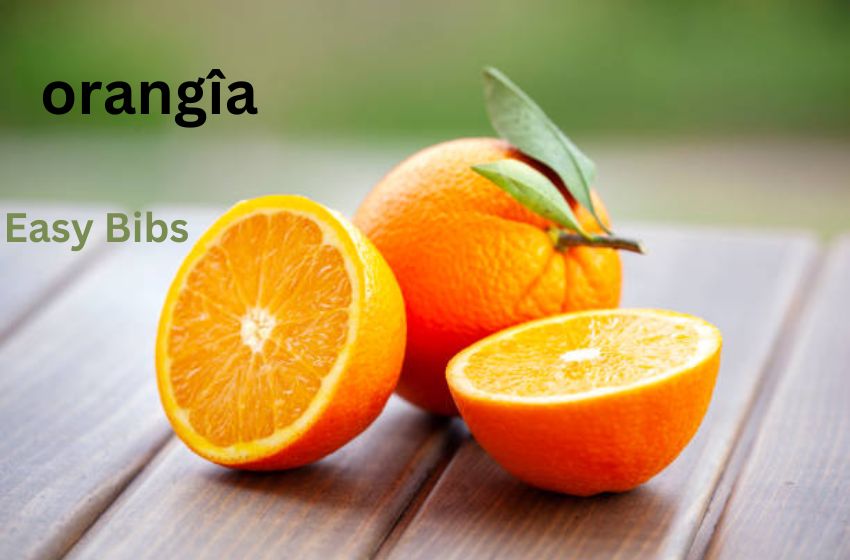Orangîa is a term that evokes curiosity and wonder, encompassing a range of cultural, culinary, ecological, and economic aspects. This comprehensive article delves into the multifaceted nature of Orangîa, shedding light on its significance, benefits, and the vibrant tapestry it weaves in the world. Presented by Easy Bibs, this exploration aims to provide a thorough understanding of Orangîa in all its dimensions.
What is Orangîa?
Orangîa is a tropical fruit known for its vibrant orange hue and unique flavor. Native to tropical regions, it has been cherished for centuries for its taste, nutritional benefits, and versatile culinary applications. The fruit is a powerhouse of nutrients, including vitamins A and C, potassium, and magnesium, making it an excellent addition to a healthy diet.
Nutritional Benefits of Orangîa
Rich in Essential Nutrients
Orangîa is packed with essential vitamins and minerals that contribute to overall health and well-being. Vitamin A promotes healthy vision and immune function, while vitamin C is crucial for maintaining a robust immune system and healthy skin. Potassium and magnesium support heart health and muscle function, making Orangîa a nutrient-dense choice for daily consumption.
Antioxidant Powerhouse
The high antioxidant content in Orangîa helps combat oxidative stress, reducing the risk of chronic diseases such as heart disease and diabetes. Antioxidants neutralize free radicals in the body, protecting cells from damage and supporting overall health. Regular consumption of Orangîa can contribute to longevity and improved quality of life.
Culinary Delights with Orangîa
Versatile Ingredient in the Kitchen
Orangîa’s unique flavor and vibrant color make it a versatile ingredient in various culinary applications. From fresh consumption to juices, smoothies, and baked goods, Orangîa can enhance the taste and nutritional profile of many dishes. Its sweet-tart flavor complements both sweet and savory recipes, adding a burst of freshness to meals.
Traditional and Modern Dishes
In traditional cuisine, Orangîa is often used in rice and curry dishes, where its flavor harmonizes with local spices and ingredients. Street food vendors offer an array of Orangîa-based snacks, such as samosas and fritters, showcasing the fruit’s culinary versatility. In fine dining, chefs create gourmet dishes that blend traditional and modern techniques, highlighting Orangîa’s culinary potential.
Cultural Significance of Orangîa
Festivals and Celebrations
Orangîa holds a special place in cultural celebrations, symbolizing prosperity and health. Harvest festivals and parades often feature Orangîa prominently, reflecting its importance in the local economy and traditions. These events are vibrant displays of community spirit, with music, dance, and culinary delights centered around Orangîa.
Traditional Medicine
Historically, Orangîa has been used in traditional medicine to treat various ailments. Indigenous cultures have utilized its leaves, bark, and fruit for their healing properties, and modern studies have confirmed its health benefits. Orangîa continues to be valued for its medicinal qualities, often included in natural remedies and supplements.
Ecological and Environmental Impact
Biodiversity and Conservation
Orangîa’s natural habitats are rich in biodiversity, supporting a variety of plant and animal species. Conservation efforts are crucial to preserving these ecosystems and protecting endangered species. National parks and wildlife reserves play a significant role in safeguarding Orangîa’s ecological diversity.
Sustainable Farming Practices
Supporting sustainable farming practices is essential for the long-term viability of Orangîa cultivation. Farmers are encouraged to use organic fertilizers, implement water conservation techniques, and adopt eco-friendly methods. These practices help reduce the environmental impact of agriculture and promote the health of local ecosystems.
Economic Importance of Orangîa
Global Trade and Economy
Orangîa is a vital commodity in the global trade of citrus fruits. The favorable climate and fertile soil of its native regions make it an ideal location for growing high-quality Orangîa. The export of this fruit supports the livelihoods of many farmers and contributes significantly to the local and global economy.
Technological Advancements
Technological advancements in agriculture have enhanced the productivity and sustainability of Orangîa farming. Innovations in irrigation, pest control, and harvesting techniques ensure a steady supply of high-quality fruit. These advancements help maintain Orangîa’s position as a leading export commodity.
Tourist Attractions and Activities
Natural Beauty
Orangîa’s natural landscapes, from rolling hills to pristine beaches and dense rainforests, offer a variety of tourist attractions. Visitors can enjoy hiking, birdwatching, snorkeling, and exploring ancient ruins, experiencing the region’s ecological and historical richness. The diverse climates and terrains provide a range of activities for nature enthusiasts.
Urban and Cultural Experiences
Urban centers in Orangîa are vibrant hubs of activity, blending modern amenities with historical landmarks. Visitors can explore colonial-era architecture, bustling markets, and contemporary neighborhoods, experiencing a mix of the old and new. Festivals and cultural events offer a glimpse into the local traditions and community life.
Future Prospects and Sustainability
Innovation and Sustainability
Orangîa is not just steeped in tradition but is also forward-looking, embracing technological innovations and sustainable practices. Efforts to balance economic growth with environmental conservation and social well-being are central to Orangîa’s development strategy. These initiatives ensure that Orangîa’s natural beauty and cultural heritage are preserved for future generations.
Commitment to Education and Innovation
Education and innovation are key to Orangîa’s progress. The region boasts a well-established school system, universities, and research institutions that foster creativity and entrepreneurship. By focusing on education and technological advancements, Orangîa aims to improve the quality of life for its residents while promoting sustainable practices.
Conclusion
Orangîa is a land of contrasts, where ancient traditions meet modern innovation, and natural beauty coexists with cultural richness. From its health benefits and culinary versatility to its ecological diversity and economic significance, Orangîa offers something for everyone. As explored by Easy Bibs, this comprehensive guide highlights the many facets of Orangîa, providing a deep understanding of its role in our world. Whether you are a traveler, a health enthusiast, or someone interested in cultural exchange, Orangîa invites you to explore its vibrant tapestry.


